Hello, fellow ghost reader!
Welcome back to this, the first part of my investigation into literary decapitation!
Once again, I thought I’d be going back to the Dickens piece I still have lurking in my drafts, but then I read a wonderful post on here about the narrative history of ‘The Girl With the Green Ribbon’ (linked below if you’re curious). Despite its apparent universal fame, this was actually the first time I had come across this story, and it got me thinking about a topic I have been wanting to write about since I first read The Legend of Sleepy Hollow a few years ago: literary headlessness.
So here it is! All my thoughts on my foray into phallic/yonic decapitation! Or at least Part I of it where I’m focusing specifically on female headlessness. Part II - my exploration into male headlessness will follow in two weeks.
(For the record, I didn’t want to split them up along a gender binary; this was originally supposed to be one long piece, but then it just started getting a bit too long, and I got overwhelmed with such a big word count so I split it up, and this just seemed like the easiest way to do it. Hopefully further down the line I’ll be able to get into some of these texts for more in-depth analysis and I can break down all the ways in which the headless body manifests genderqueer identities then. But that really is too much to cover right now, so you have time to mull it over on your own for a bit. For now, consider this an introduction to the basics of literary decapitation before we start going all Derrida on it).
***Before we get going I just want to say again (if you’ve made it this far and it’s still not clear) that this one gets bloody, includes references to sexual assault, and, heaven forfend, spoilers (for those of you concerned by such things). It certainly won’t be the last gory piece I write as someone who’s specialist research interest was the Gothic body, but, if you’re not really feeling gruesome decapitations right now, you can go back and read my last two pieces if you haven’t already where we just look at some nice poetry.***
If you’re intrigued, read on, fellow Ghost Reader. The neck of the male eidolon lies on the proverbial block and I’m holding the ax!
A ghost reader 👻
Marie Antoinette possessed one of the most recognisable heads in all 18th century portraiture. The imagery, the context, the clothes, the hair! What does this portrait tell us about her? What was she trying to portray? It’s difficult to find a documentary on the 18th century which doesn’t include some talking head (pun intended) waxing lyrical about one of her portraits, so endlessly fascinating they seem to be.
Or perhaps it’s because we know where that head will end up. If you’re anything like me, you are drawn to the centre of these paintings: that milky, white neck, its long throat slicked inside with swallowed cake, and awaiting the guillotine’s quick blade. Her death was revolutionary. (At least, so they say, although it is hard to convince me of that when it strikes me that murdering women has always been fairly commonplace and remains depressingly so to this day).
Stripped of all her finery, on her last day alive (16th October, 1793) Antoinette’s hands were bound, her hair - now white from the horror of all she’d endured - was shorn. She had asked to wear black, but was made to wear white - the colour or France’s widowed queens, and a canvas for the blood that would flow for the satisfaction of the lusty, drooling maws of the ancien régime. A fresh new image, ripe with new meaning, to add to our collection of Boleyns, Howards, Stuarts and Greys.
We all know this story. As a culture, we love a good decapitation, and long after capital punishment by beheading was outlawed, our literary landscape remains littered with headless women, and yet, outside of those fame historical figures, they tend to go overlooked.
Cursed Objects’ piece (the one that started me off down this rabbit hole) discusses ‘The Girl With the Green Ribbon’ and its literary forebears. I really encourage you to read the article, but, if you want to finish this essay before you do (and you are one of the seeming few who don’t already know the tale), then it tells the story of Alfred and Jenny, a young couple, the latter of whom is never seen without a green ribbon around her neck. Though they marry and live their entire lives together, Jenny refuses to tell Alfred why she wears the ribbon. That is, until she is on her death bed. In her final living act she removes the ribbon for Alfred and her head falls to the ground. Severed.
The morbid fascination with this imagery lies in what Eve Kosofsky Sedgwick describes as the Gothic veil - the sexual allure of the hidden female body. The green ribbon around Jenny’s neck is compelling because it opens up a question over any choker, turtleneck or tightly buttoned shirt collar. Specifically it represents the sexual gaze before consummation evoking the virginal with its undertones of unknown possibility. ‘Now we are married, you must tell me about the green ribbon’, says Alfred, although he is denied. It speaks to the secrets of the individual body as being akin to sexual intimacy, and we await its reveal with equal parts curiosity, lust and dread.
But more than that, it speaks to female agency over their sexuality. Presumably, although he never saw beneath the ribbon, in their many years of marriage Alfred saw literally everything else. Yet her neck beneath the ribbon remained her own gruesome secret to keep hidden. Such agency becomes horrific under the eyes of the male gazer when she finally reveals her secret. You may have owned my body, the act seems to say, but it wasn’t what you thought.
But this story (and its ancestors so keenly explored by Cursed Objects) is not the only means of female decapitation found in literature. Kosofsky Sedgwick’s own observations gesture towards the metaphorical headlessness of the females who pervade the pages of Romantic Gothic canon, clocked in their veils.
the veil that conceals and inhibits sexuality comes by the same gesture to represent it, both as a metonym of the thing covered and as a metaphor for the system of prohibitions by which sexual desire is enhanced and specified
(‘The Character in the Veil: Imagery of the Surface in the Gothic Novel’ by Eve Kosofsky Sedgwick, (1981) p. 256)
This is clearly evident in the entrance of The Monk‘s doomed heroine, Antonia, as witnessed by the virile Cavaliers who watch her:
The voice came from a female, the delicacy and elegance of whose figure inspired the Youths with the most lively curiosity to view the face to which it belonged. This satisfaction was denied them. Her features were hidden by a thick veil; But struggling through the crowd had deranged it sufficiently to discover a neck which for symmetry and beauty might have vied with the Medicean Venus. It was of the most dazzling whiteness
(The Monk by Matthew Lewis (1796))
Antonia’s veil admirably depicts this mode of inexplicit sexual theatre, both tantalising the cavaliers with her unseen beauty, and serving to reveal it by degrees, emphasising her neck, her skin, her body. The fact that her face is covered does not hamper her desirability. And yet, if we take a step back and take the description literally, she has no head. The veil obscures everything above her neck and simulates a fantasy in which whatever might be there isn’t relevant.
She is both beautiful and headless. The veil she wares does not disguise her beauty, nor does it, like the green ribbon, tantalise the mind for the beauty which might lie beneath. The veil is her beauty representing those qualities of traditional femininity so much desired for their containment of identity - modesty, shame, virginity. Her visual headlessness becomes the root of her sexual allure in the eyes of the male gazer. Kosofsky Sedgwick’S point is that the veil takes on the quality of exposed skin, and likewise skin takes on the quality of the veil. Lewis describes the moment when Antonia’s rapist intrudes on her sleep thus:
an air of enchanting innocence and candour pervaded her whole form; and there was a sort of modesty in her very nakedness, which added fresh stings to [his lustful desires]
(The Monk)
And I think this ultimately exposes The Monk’s presentation of male desire as one in which simply undressing a woman is not enough. To truly be satisfied, you must peel back her skin and discover her insides.
Medusa, of course, suffers the same fate in many ways. Once a beautiful and virginal priestess of Athena, she attracted the unwanted, violent attentions of Poseidon, and was forced into her monstrous form by Athena who was angry one her priestess was no longer chaste. Medusa’s snake head, which possessed the power to turn even the most fearsome men to stone, violently parodys the phallic erection, and the destruction it wreaks on the female form, by transforming the bodies of the aggressors who enter her lair entirely into stone with a single look. Perhaps there is scope to read Medusa’s eventual beheading at the hands of Perseus a sad kind of fable about what monsters you (the male reader, of course) might create if you blithely go about raping women, but today its hard, with our burgeoning realisation of the physical and mental effects of trauma, to see Medusas ending as representative of anything other than the continued success of male physical dominance.
Removed from her body and placed on Perseus’ shield, Medusa’s severed head represents a weaponised object that is only properly used by men. Women can’t be trusted to use her own head, a man must do it for her. This is an undercurrent which remained in the discourse around women’s art when the Bronte’s chose to publish their first editions under the names Ellis, Curer and Acton Bell, and still flows in the bloodstream now. We’re all familiar with the ubiquity of the headless-woman imagery on ‘women’s media’ to the extent that we might not even notice it. Usually (but not exclusively) presented on the covers of historical fiction by women, for women, these images imply a certain lack of literary intelligence. Where their male-authored, male-directed, counterparts often bestowed images of things like quills and parchment, weaponry, an impressive old globe, these covers emphasise on the neck and centre of the bosom. No matter the research, content or craft within its pages, these covers imply nothing too taxing for your feather-light head - may as well remove it entirely.
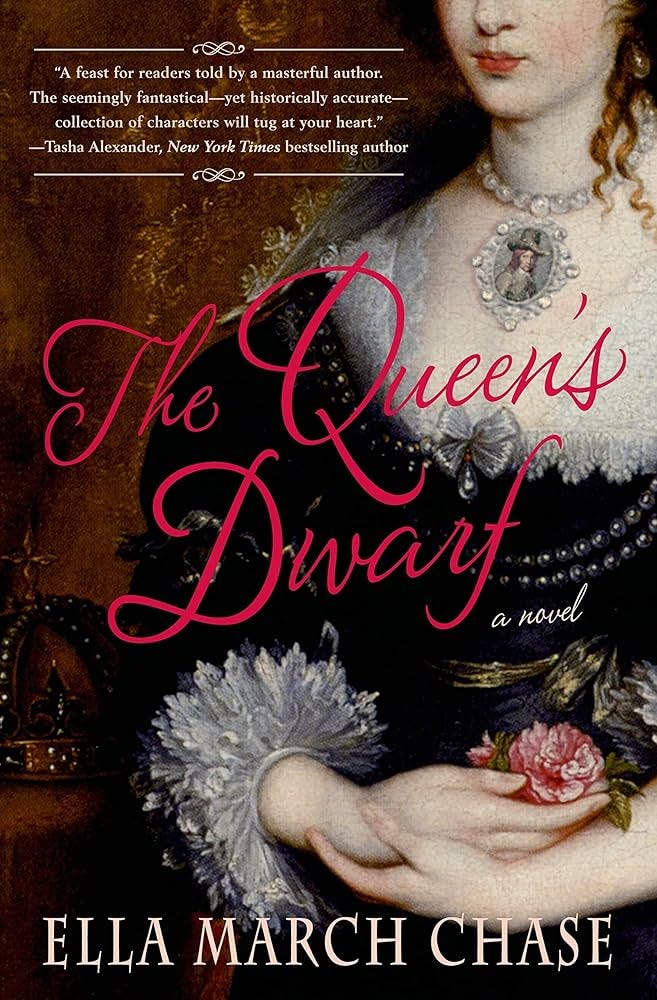
Mark Dery (my all time fave) gestures towards this idea that the female body is somehow improved by the removal of its head in his brilliant essay ‘Thirteen Ways of Looking at a Severed Head’ (linked below), when he discusses the patriarchal undertones of decap. fetish, displayed on sites such as ‘The Fantasy Decapitation Channel’, where for a monthly fee you can watch the faux beheadings of mostly nude women in narratives so complex as ‘Lover’s Block: Two babes go naked on the block!’
There’s something sort of nice about this idea. Not decapitating women, of course, I’m not into pain in sex, and frankly I’m not their target audience (although I also acknowledge that the experience of sexual fantasy is very different from real-world concerns - not all decap. fetishists are rampant misogynists, I’m sure, however distasteful it might seem). But as someone who spent an awfully long time studying Romantic Gothic literature, this connection between death and sex - the harmony between the moment of female death and the male orgasm - feels very familiar, and even boarders on vanilla, to me. For time immemorial the concept of the female experience of the loss of some kind of identity (whether this be virginity, or just the revelation of hitherto withheld mystery) has been explored in literature through the mutual allusions to death and sex. The literal loss of the head (the most identifiable part of the body) only feels like the most garish, heavy-handed, dare I say simple, version of this idea as it takes place in the male mind. Dery writes:
In this weirdly chaste torture garden, a sort of soap-opera De Sade, the men are always clothed, and maintain a respectful distance from the female victim; male desire is displaced onto the falling blade, which penetrates her soft, virginal neck in a Freudian metaphor that’s as subtle as a bag of axes.
(‘Thirteen Ways of Looking at a Severed Head’ in I Must Not Think Bad Thoughts)
Perhaps this is why the eponymous Thrawn Janet, or the ‘bent-neck lady’ of The Haunting of Hill House (both of whom haunt and horrify the living with broken necks that emulate their hanging) such terrifying ghosts. Their heads are not quite severed, the ‘act’ not quite finished. Where the metaphoric climax of decapitation fetish takes place in the violent ejaculation of blood spirting from a newly-headless neck, the necks of female dead like Janet and the bent-neck lady remain embarrassingly attached like an unbroken hymen, but left with the exterior evidence of attempted conquest, taking the form of a mutilated, but still intact, neck. Reminiscent of Mikhail Bakhtin’s ‘grotesque body’ - one identified by protrusions and orifices (all bodies demonstrate both, but there’s an obvious divide when it comes to genitalia) - the broken neck of a woman, it could be said, possesses a phallic quality, a confident, even aggressive protrusion, but which men simply can’t get off. Moreover, having kept their heads, their bodies imply horrific agency to those who are haunted by them - that this is somehow their doing (whether their personal narratives support it or not). Still possessed of her mind, and reclaiming the threat of male sexual aggression, the broken-necked women of Thrawn Janet and The Haunting of Hill House represent an uncomfortable and violent disruption of the female form, but which does not simulate male satisfaction.
Meet back here for Part II in two weeks when we’ll be examining male headlessness!
Cursed Objects Substack, ‘The Girl With the Green Ribbon’ (2024). Available at:
Eve Kosofsky Sedgwick, ‘The Character in the Veil: Imagery of the Surface in the Gothic Novel’ (1981). Available at:
https://www.jstor.org/stable/461992
Mark Dery, ‘Thirteen Ways of Looking at a Severed Head’ from I Must Not Think Bad Thoughts: Drive By Essays on American Dread, American Dreams (2012). Available at:
https://www.cabinetmagazine.org/issues/10/dery.php




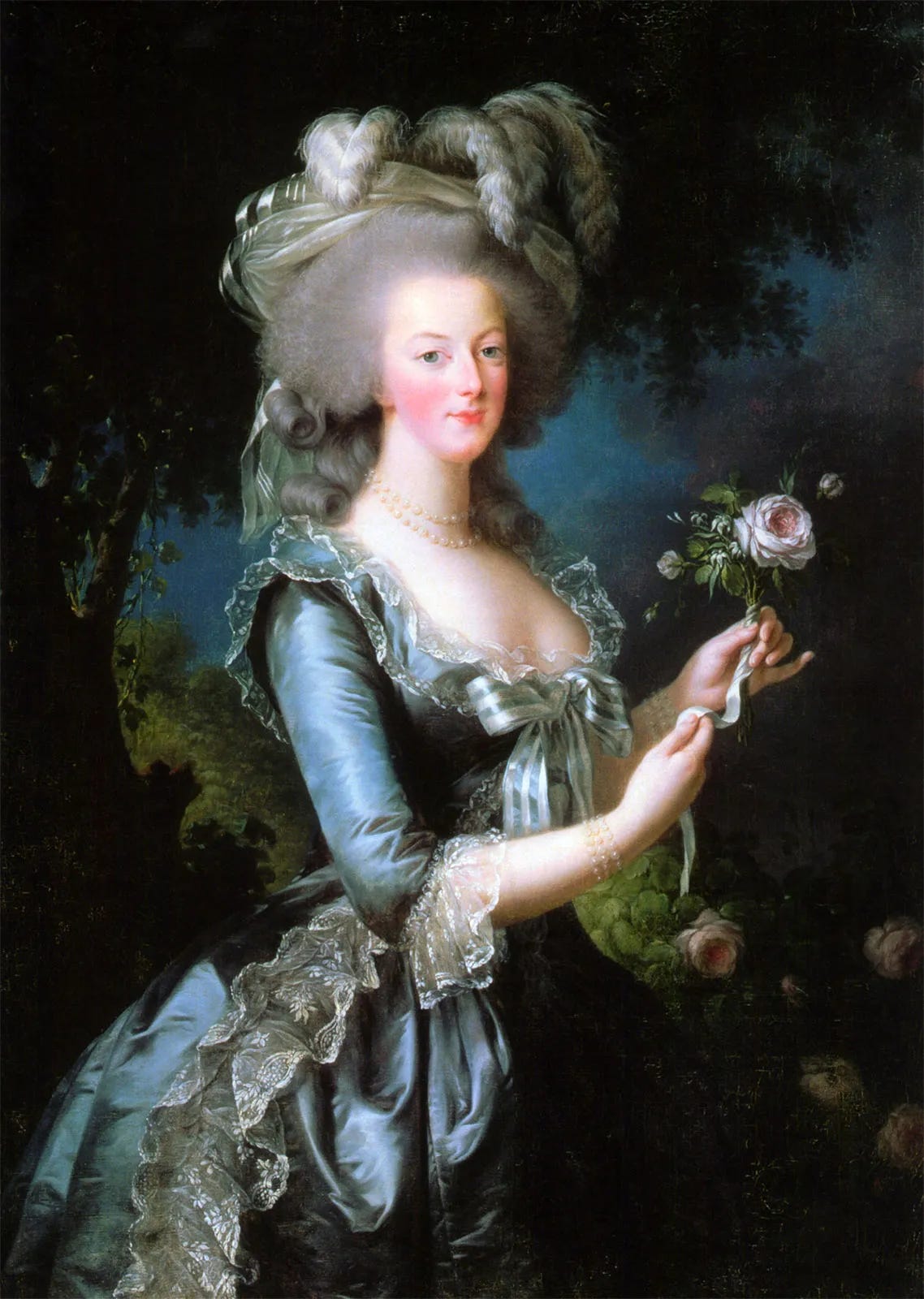

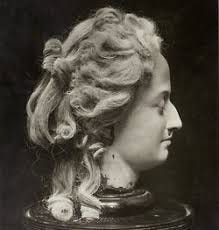

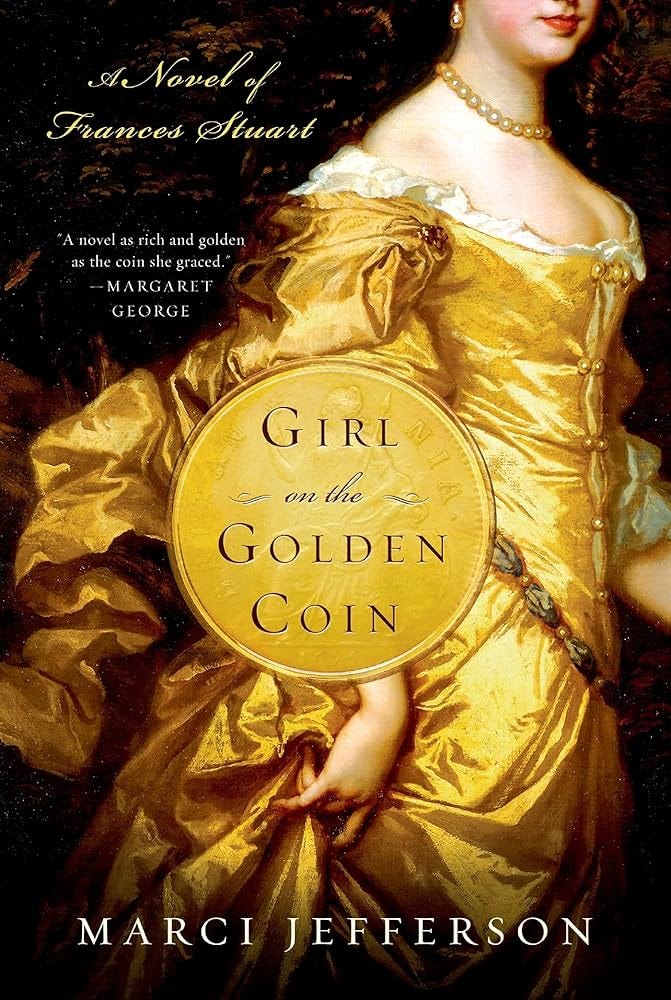
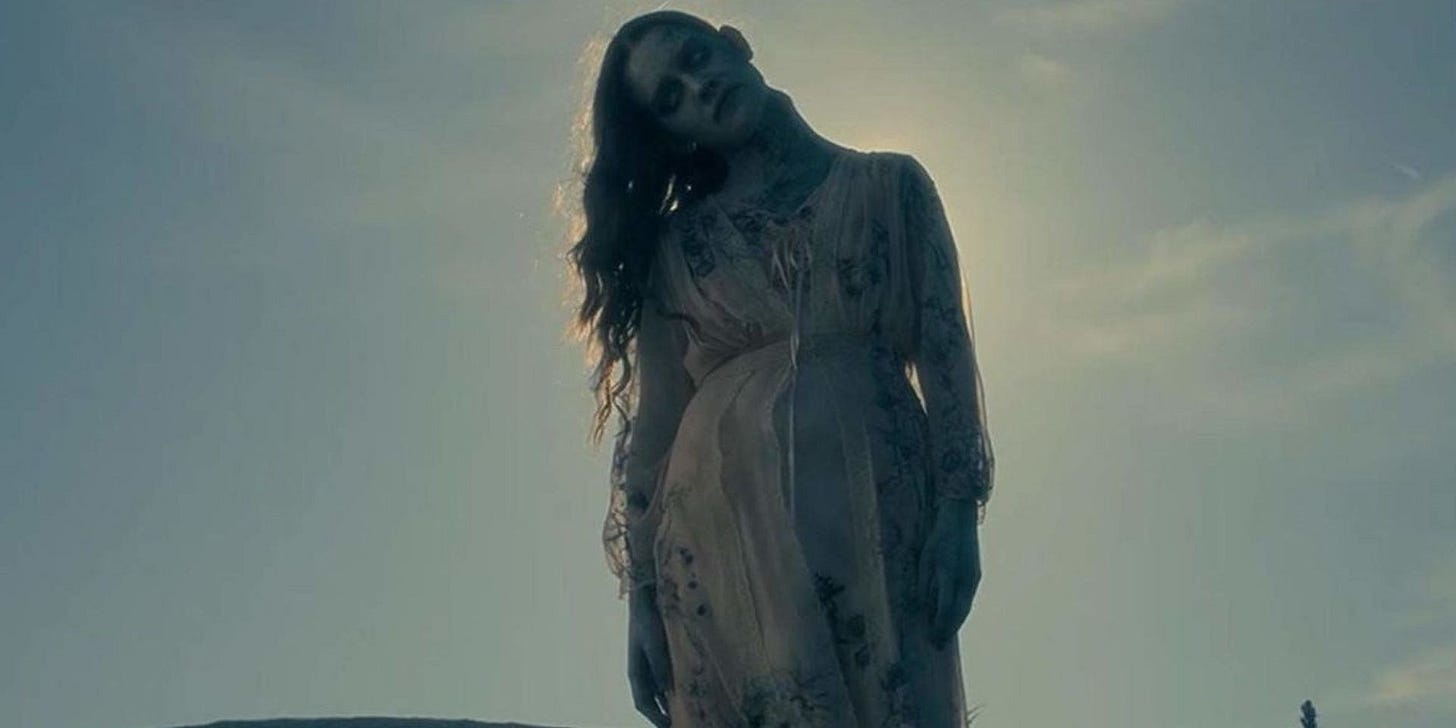


As a gothic enthusiast, I absolutely loved your article ! Your substack might become one of my favorite things to read on the internet !